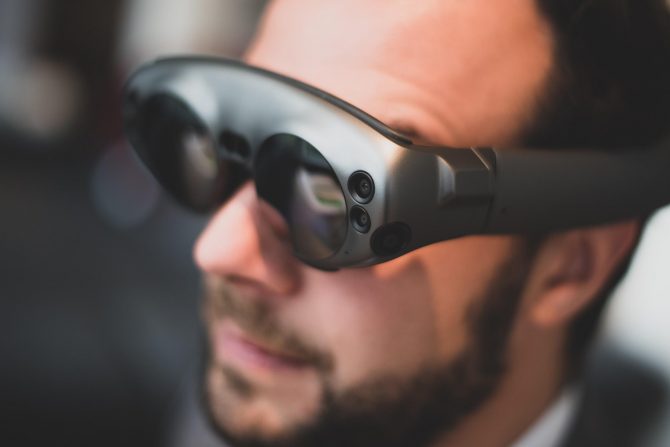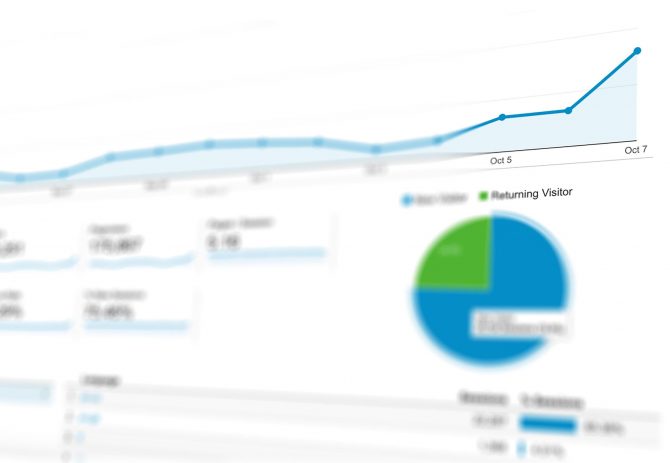If you’re worried about how artificial intelligence is going to shape the future, you’re too late – AI is here, and it’s already having a significant impact on people’s lives, just maybe not in the way the movies told us it would.
Startups are already seamlessly integrating AI technologies into their business strategies, not only when it comes to automating tasks within the company, but also when it comes to communicating and engaging with their customers.
Here are five ways that startups are using artificial intelligence to improve their businesses:
Recommendation Engines

Any online store uses some kind of recommendation engine, which are filtering tools that use algorithms and data to recommend the most relevant items or services to the customer.
This capability of online stores has expanded into offering suggestions within products to boost efficiency. Bookmark.com, for example, employs a recommendation engine within its site that highlights and suggests rearranging the most engaged segments to increase conversions.
Recommendation engines are beneficial to businesses because they help to personalize and provide customers with relevant information that corresponds with their preferences and tastes.
How it Works
Recommendation engines work through a four-step process that includes collecting, storing, analyzing, and filtering customer data.
First, a recommendation engine will collect explicit (product ratings, reviews, comments, etc.) and implicit (order history, page views, cart events, etc.) data on the user. The data is then stored using a NoSQL database, standard SQL database, or another type of storage depending on what kind of information is being collected.
Then, the recommendation engine analyzes and filters the data to determine which items have similar engagements. There are many different analysis methods used to filter data, including real-time analysis systems, batch analysis, and near-real-time analysis.
The analysis method used will vary based on the way you want to filter recommendations. For instance, recommendation engines can provide content-based recommendations (e.g., products similar to those the user has interacted with), cluster recommendations (e.g., products that go well together), or collaborative recommendations (e.g., products based on engagements of other users with similar behavior).
Benefits
If set up effectively, recommendation engines can boost CTR (Click Through Rate), conversions, and other important, harder metrics to define like customer satisfaction and retention. They also increase personalization, and organic discovery, making it more likely for customers to re-visit or re-engage with your website.
Even better, recommendation engines allow companies to do this without performing any market research, as they are already collecting all of the data they need.
Recommendation engines are useful for more than e-commerce and are great for encouraging longer interaction on websites as well. Look to almost any big site, and you’ll see an example of a recommendation engine: Facebook’s “People You May Know,” LinkedIn’s “Jobs You Might Be Interested In,” YouTube’s “Recommended Videos,” and more.
Extended Reality

Extended Reality (XR) consists of both augmented and virtual reality, and it is currently creating new avenues for businesses to market and test products and concepts with customers.
Marketing and Brand Immersion
The integration of XR into digital marketing is inspiring new space for creativity when forming brand experiences, and we’ve already seen a lot of successful forays in this space. For example, IKEA ventured into the realm of XR with interactive content, allowing customers to place furniture in their rooms with the IKEA Place app.
There’s no doubt that companies who focus on using XR to create memorable and unique experiences will benefit from an increase in brand receptivity as customers interact with their products in a more “hands-on” manner.
Product Testing
XR is even helping to train professionals across industries and allowing customers to imagine their lives with particular products.
With augmented reality and virtual reality, companies can offer tailored training to employees without any risk or danger. For example, a company could create AR data overlays to help boiler engineers enhance a defunct piece of equipment they are fixing without manuals, or offer VR for training in hard situations like laboratory technicians training on biosafety.
XR is also offering real benefits to consumers with product testing. One example is BMW, which allows customers to configure a car in AR and have that passed on to the dealership. Customers can then walk around and interact with a virtual car before it’s built. Zara is also testing the parameters of XR, with the clothing company announcing that it would have AR displays, so people can see how certain items would look without having to try it on.
Another example of interactive XR is Chevy’s scan and send initiative. Chevy recently utilized AI and image recognition to transform the traditional car brochure into an AI-powered mobile experience. Now, all prospective buyers have to do to learn more about a product is to scan a Chevy Bolt brochure at their local dealership. They will then automatically be served video content to explain the car’s main features and differentiators in more detail. Unlike traditional barcode scanning or QR code reading, customers don’t need to download an app for this – it’s all done through the mobile browser using the camera of the phone as the scanner and relying on the AI to connect the dots.
With XR, businesses can create unique brand experiences with which their customers or followers can engage on even the smallest scale. Instagram filters and effects on story ads have made this AI technology incredibly accessible.
Campaign Optimization

The emergence of new technologies changes the way businesses can both serve customers and address their needs. With innovations in AI, the focus is shifting away from old analytics strategies like the “last click” mindset and moving toward in-depth learning strategies and attribution service reporting.
Deep Learning
AI technology can go deeper into the DNA of our marketing efforts, collecting even more data about customers and applying intelligent filters and categories – like with AdParlor’s ability to optimize performance by proprietary intelligence tags to drill down across marketing data at scale, including creative.
AI’s contribution to optimizing ad targeting, increasing efficient pricing, eliminating dead-end ad networks, and ultimately phasing out the set-it-and-forget-it approach to optimization will be the essential pathway to success in intelligent marketing today and in the future.
Attribution Service
Attribution creates a more complete picture of onboarding – from impression to sale – making it easier for businesses to see which of their advertising efforts are making the most impact.
With services like Google Attribution, you can see the complete customer journey, from even before they interacted with your company’s products or services. There’s no longer a focus on only the last click, but a report on the whole journey.
You can optimize your campaign by incorporating ETL (Extract-Transform-Load) strategies for better business intelligence implementation. ETL allows you to blend and integrate vast amounts of data from multiple sources, and tools like Informatica’s Intelligent Data Integration Platform help for better data analysis.
Social Media Analysis

With AI, new methods of optimizing social media are making it easier for businesses to measure the performance of messages and images to find what resonates best with their audiences.
Natural Language Processing
Having AI-powered software at your fingertips to analyze social media profiles, along with comments and posts from your followers, can help you to compile lists of trending topics and discussions.
Using NLP (Natural Language Processing) and Sentiment analysis, AI software can translate social media data into direct advice about what topics, tone, emotions, and visual content will better engage your audience. They can also suggest the precise time when a post should be published and analyze post-performance to collect new insights.
Incorporating AI into your social media strategies by automating notifications can help to see who interacts with your content and compiling them into lists for retargeting on platforms like Twitter and Facebook.
Customer Support

Over the next decade, automation in customer service industries will continue to increase. People will begin to be phased out by machines for more straightforward customer experience tasks, such as customer support.
Chatbots
Customer service chatbots for necessary inquiries and simple transactions are essential for automating customer support tasks.
AI-powered voice assistants can answer simple questions in help desk centers like opening hours and scheduling while also offering 24/7 customer support. For the enterprise, voice assistants can help with self-service diagnostics or scheduling optimization for appointments.
Personalized Messaging and Marketing
Data can be automatically incorporated into CRMs from chatbots or voice assistants, which you can, in turn, use to help personalize products and services for customers. With more direct, personalized messaging, you can build a more reliable connection with your customers, encouraging brand loyalty.
To incorporate AI in your customer support strategies, take advantage of chatbots on messaging services to help resolve simple problems more effectively.
Conclusion
If you want your business to remain competitive, incorporating artificial intelligence wherever you can is in your best interests.




As all the things are based on AI nowadays, it is an interesting post to read!!